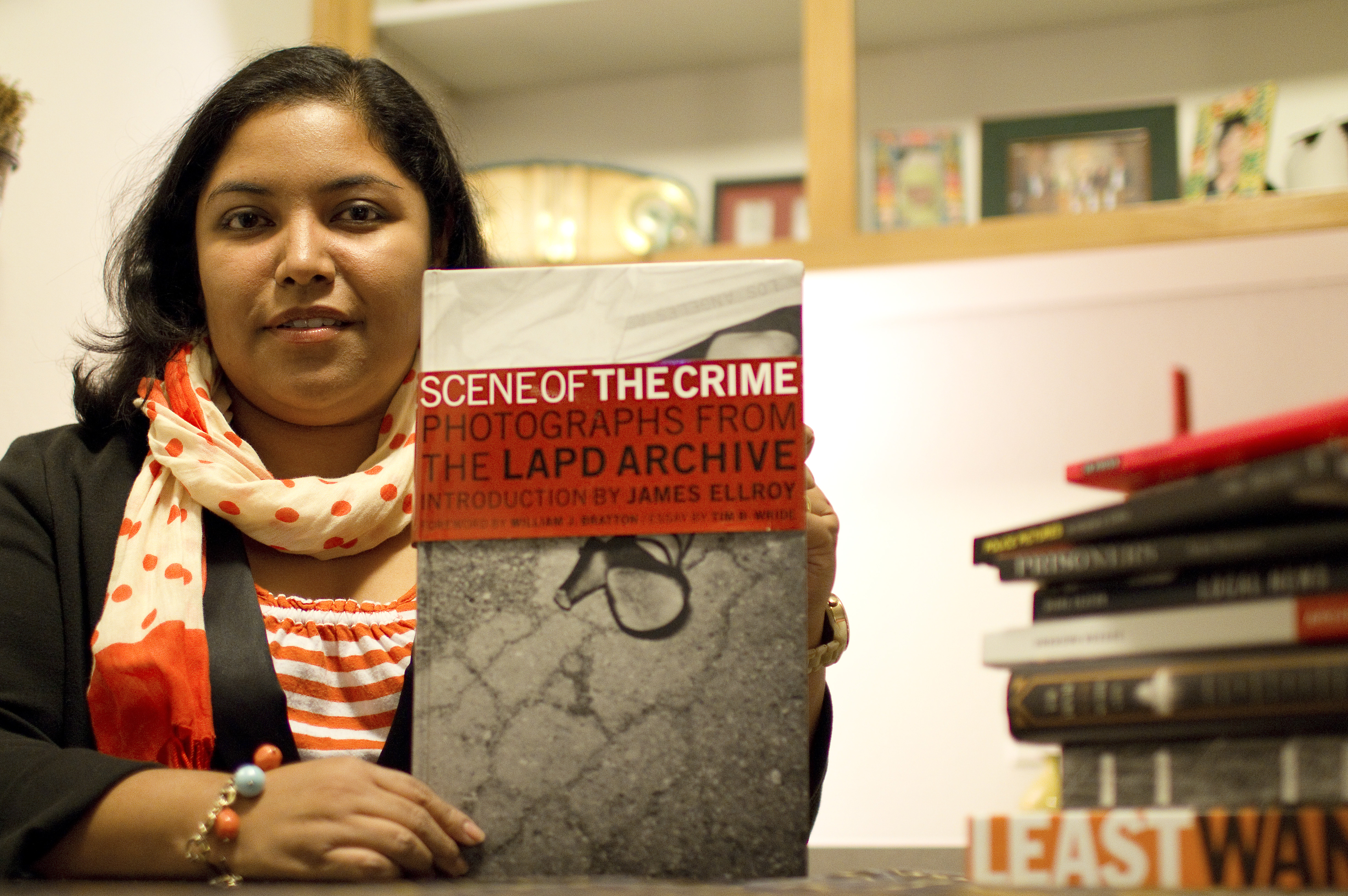Correction: The original version of this article contained an error. “Scene of the Crime: Photographs from the LAPD Archives” is one of the photography books in Dahlia Gratia Setiyawan’s collection.
The dining table of Dahlia Gratia Setiyawan, a history doctoral candidate, is covered with large photography books open to pages of unsmiling mug shots and homicide crime scenes.
There is a copy of “In Cold Blood,” Truman Capote’s 1966 account of a quadruple homicide in Holcomb, Kansas; A pale foot sticks out from under a white blanket on the cover of “Scene of the Crime: Photographs from the LAPD Archives,” a collection of black and white crime scene photos, and a copy of “Unknown Weegee,” an anthology of the mid-20th century crime scene photographer Arthur Felig, better known as Weegee.
“He had a police scanner in his car, so he would listen to the reports and he would go to the scene,” Setiyawan said. “He would take photos of car accidents, of mob hits, kind of the underbelly of the city in New York.”
Setiyawan said she developed an interest in true crime and crime scene photography 10 years ago, when her father took her to see an exhibit of Felig’s photography in Philadelphia.
She then began collecting the works that would make up her collection of crime photography and literature, for which she was awarded second place in the graduate student category of 2011’s Robert B. and Blanche Campbell Student Book Collecting competition.
The Campbell Student Book Collecting Competition was started more than 63 years ago by bookstore owners Robert and Blanche Campbell to support the intellectual curiosity of students, said Lucinda Newsome, head of Administrative Services and Acquisitions for the Charles E. Young Library’s Special Collections department.
According to Setiyawan, the title of her collection, “The Art of True Crime,” comes in part from the artistic eye crime photographers and reporters, such as Capote, used to present the humanity in criminal events.
“What got me into collecting these types of books, beyond Weegee, is that people like Weegee saw the beauty in the terrible, in the crime scene, and it became art,” Setiyawan said.
According to Setiyawan, her passion for books began when she was a young girl, when her parents would read to her every night. Though her parents were not scholars or voracious fiction readers, she said they fully understood the value of knowledge and reading, and they passed that down to her.
“One of the things about me … is I always have a book in my hand, everywhere, at every time,” Setiyawan said.
Ian Barr, a biochemistry graduate student and fellow Campbell competition winner, said his interest in reading began with comics, before he moved on to the works of Jack London and Mark Twain as a middle school student.
His collection, “Descent with Modification: A Survey of 20th Century Evolutionary Biology,” includes 25 works covering the field from 1913 to 2004 and won the Freida Kuiper Beaudin Prize for Outstanding Collection in the Sciences.
“It’s a collection because it is a single field and over the course of time you can see the transformation of the field of evolutionary biology,” Barr said. “I collected most of the major works in the field during this time.”
One of the most valuable books in Barr’s collection may be “Evolution by Gene Duplication,” by Susumu Ohno. The work, which focuses on the ability of a type of mutation ““ gene duplication ““ to drive evolution, has been out of print since 1970. Barr said he has seen copies on Amazon priced up to $300. He found his hardcover first edition in a UC Santa Barbara library rummage sale for $1.
Barr, who said he usually frequents the same spots for books, was not surprised to find such a valuable book being sold for next to nothing.
“Maybe no one else would care about this, but I’m someone who cares about this book,” Barr said. “There’s a very small group of people who care about certain books and will pay a decent amount of money for them.”
Barr said many of the books in his collection are valuable references, particularly the ones that are not available in some libraries.
According to Setiyawan, who also collects South East Asian fiction and classic literature, collecting books provides a sense of accomplishment.
“I think book ownership is a very important thing and that everyone, if they can build their personal library, it’s a really enriching part of life,” Setiyawan said. “There’s a comfort in knowing you can always revisit your favorite stories.”
